#vall de núria
Explore tagged Tumblr posts
Photo



Seasons in Vall de Núria (High Pyrenees, Catalonia).
Photos by: autumn - calcalau (Twitter, Instagram), winter - Lugares de Nieve, summer - Ripollès Turisme.
#vall de núria#catalunya#fotografia#natura#catalonia#pyrenees#travel#landscape#landscapes#seasons#landscape photography#nature photography#europe#mountains#beautiful places#earth
70 notes
·
View notes
Text



walking around la vall de núria (catalonia), 2023
0 notes
Video
youtube
🏔 La Vall de Núria
8 notes
·
View notes
Text

La Mare de Déu de Núria és una mare-de-déu catalana que rep el nom de la vall pirinenca on és custodiada, la vall de Núria, al municipi de Queralbs. És la patrona de la Diòcesi d'Urgell (al costat de Sant Ermengol) i del Pirineu català.
La talla romànica que la representa fou feta el segle XII o XIII. La seva festivitat és el 8 de setembre.
#Mare de Déu de Núria#Núria#mare-de-déu#art#art romànic#romànic català#Catalunya#Principat de Catalunya#8 de setembre#Queralbs#sagrat#religió
1 note
·
View note
Text

excursión en la vall de núria :)
1 note
·
View note
Text
SNACK FOR EVERYONE 202309302146RT1
The biggest snack.Location: Vall de Núria, Catalonia, Southern Europe. Fine Art Prints

View On WordPress
#blue sky#clouds#donut#drink#food#grass#mountains#nuria valley#aesthetic#artistsontumblr#imiging#lensblr#lifeisbeautiful#original#originalphotographer#photographersontumblr#photography#pictureoftheday#thephotographerssociety#tumblers
1 note
·
View note
Text
Barcelona Road trips
Barcelona is a fantastic starting point for various road trips that offer stunning landscapes, historical sites, and charming towns to explore. Here are a few road trip ideas you might consider from Barcelona:
Costa Brava Coastal Drive: Drive along the beautiful Costa Brava coastline, known for its rugged cliffs, clear blue waters, and charming fishing villages. Make stops at towns like Tossa de Mar, Cadaqués, and Begur. Don't miss the Salvador Dalí House in Portlligat and the Dalí Theatre-Museum in Figueres.
Montserrat and Wine Country: Head inland to visit the Montserrat mountain, famous for its unique rock formations and the Montserrat Abbey. Afterward, explore the nearby Penedès wine region, known for producing some of Spain's finest sparkling wines (Cava). You can enjoy wine tasting and vineyard tours in this area.
Pyrenees Mountains: Drive north to the Pyrenees, a mountain range separating Spain from France. Explore the beautiful landscapes, go hiking, and enjoy outdoor activities in places like Vall de Núria, La Molina, or Boí Taüll. If you're visiting in winter, these areas also offer great skiing opportunities.
Catalan Cava Route: This route takes you through the Penedès region, famous not only for its wines but also for its sparkling wines, known as Cava. Visit Cava cellars, learn about the production process, and enjoy tastings at renowned wineries like Freixenet and Codorníu.
Girona and the Garrotxa Volcanic Zone Natural Park: Head north to Girona, a charming medieval city with a well-preserved old town. After exploring Girona, continue to the Garrotxa Volcanic Zone Natural Park, where you can hike and see ancient volcanic landscapes, including the Santa Margarida volcano.
Tarragona and the Ebro Delta: Drive south to Tarragona, known for its Roman ruins and historic sites. Explore the ancient Roman amphitheater, aqueduct, and other archaeological sites. Then head to the Ebro Delta, a unique wetland area that's home to a variety of bird species. You can take boat trips or bike around the delta.
Andorra and the Catalan Pyrenees: If you're up for a longer road trip, consider driving to the tiny principality of Andorra nestled in the Pyrenees. Enjoy shopping, outdoor activities, and mountain scenery. On your way, you can explore various picturesque towns and natural wonders in the Catalan Pyrenees.
Remember to plan your road trips ahead of time, ensure your vehicle is in good condition, and check local regulations or road conditions before embarking on your journey. Also, have a good map or navigation app handy, as well as any necessary travel documents.
0 notes
Text

View of the Núria Valley (Vall de Núria) in the High Pyrenees, Catalonia.
Photo by Vall de Núria (Instagram, Facebook, Twitter).
This valley is only accessible through a rack railway. This train ride lasts for 40 minutes and goes up an elevation of 1,059 m (= over 3474 ft) in just 12.5 km (= over 41 010 ft).
The valley is a highly symbolic place in Catalan culture and Christian religion, because the Virgin of Núria (Mare de Déu de Núria) was found here.
You can read the legend about Saint Giles, a little bit of history, and the fertility ritual that is still done nowadays under the cut.
The legend says that Saint Giles the Hermit lived in Núria between the years 700 and 703. During his stay, he used to ring a bell to call the shepherds of the valley in order to explain Christianity to them. The shepherds would gather around a cross that Saint Giles had sculpted himself, and he would give them food that he cooked himself in a cauldron. It was during these years that Saint Giles also sculpted the image of the Virgin Mary. As a result of a religious persecution, Saint Giles left, but not before hiding the bell, the cross and the cauldron.
In the year 1072, a man called Amadeus came from Dalmatia or Syria to Núria, because he was following a divine inspiration that told him where to find Mary's relics. Some local shepherd helped him build a little chapel, but he didn't find anything so eventually he left. Years later, in 1079, a bull hit one of the chapel's walls and, when the wall crumbled, the shepherds found the image of Mary, the bell, the cross and the cauldron.
The first hospice for pilgrims that we have written proof of dates from the year 1162, in the same Papal bull where Pope Alexander III declares September 8th as the feast dedicated to the Virgin of Núria, as is still celebrated nowadays. Sadly, the early buildings were destroyed in the 1428 Catalonia earthquake. It was rebuilt and expanded in the 1440s and the 1600s, but in the 1880s it was considered that such an important site needed bigger and more modern architecture instead of the old and small one in a style that was considered old-fashioned. For this reason, in the 1880s they started building the sanctuary building we can visit nowadays, with a facade designed in 1923, and the old church was demolished.

Building the new church, June 1911.
A tradition that has survived until nowadays involves the cauldron and the bell. Couples who can't have children go to the Núria sanctuary, where the woman places her head in the cauldron and rings the bell. This is the way of asking Mary of Núria to give them children. The tradition is that, if it works and they have a girl, they will name her Núria, and if it's a boy, they will name him Gil. Some folklorists such as Joan Amades have written that miraculous fertility was already the point of pilgrimage to the valley in pre-Christian times.



Photos: historical postcards and Apunts de viatges (Jordi Canal-Soler).
The Virgin of Núria is the patron saint of the Catalan Pyrenees and one of the most famous Found Marys in Catalonia. Núria is a very common name in Catalan.
In 1967, the statue of the Virgin of Núria was kidnapped by a group of Catalan Catholic antifascists (who weren't identified until 50 years later!) but this post has been long enough, so we'll talk about this another day.
#vall de núria#catalunya#fotografia#landscape#catalonia#travel photography#travel#europe#nature#landscape photography#tourism#mountains#scenic#natura#nature photography#núria#llegendes#religió
64 notes
·
View notes
Photo

Vall de Núria
#Vall de Núria#Ripolles#Girona#Catalunya#Catalonia#Cataluña#senderisme#senderismo#muntanyes#montañas#mountains
15 notes
·
View notes
Text

my sister walking around la vall de núria, i love her so much <3
1 note
·
View note
Photo

Santuari de Núria
#Santuari de Núria#Vall de Núria#Ripolles#Girona#Catalunya#Catalonia#Cataluña#Pirineus#Pirineos#pyrinees
9 notes
·
View notes
Photo

M.G. Vall de Núria by bruixa
#mountain#mountain village#mountain pass#vall de núria#catalonia#black and white#mobile#trekking#natu
2 notes
·
View notes
Photo
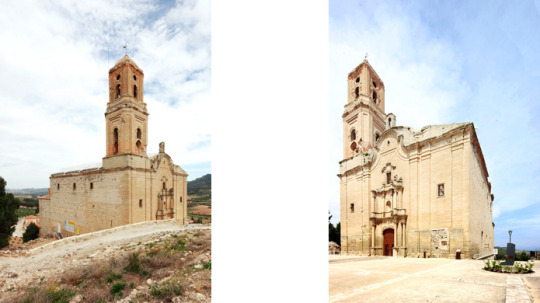

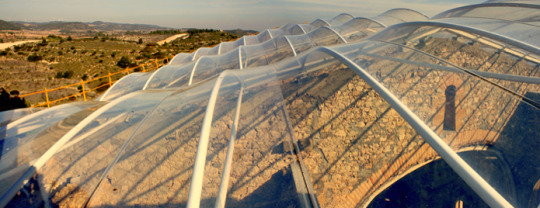
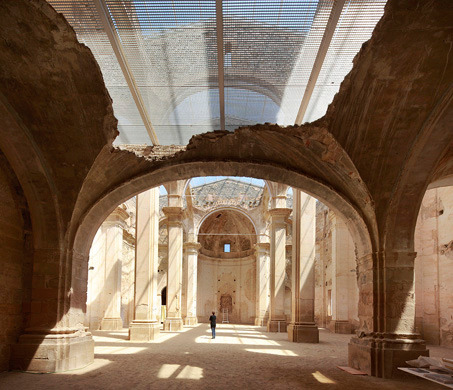
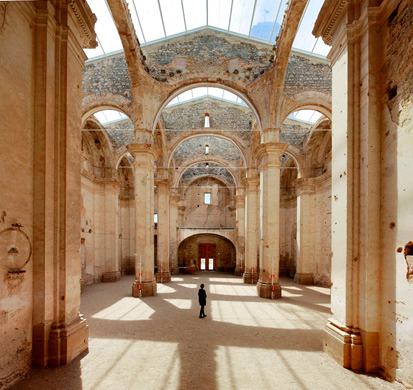
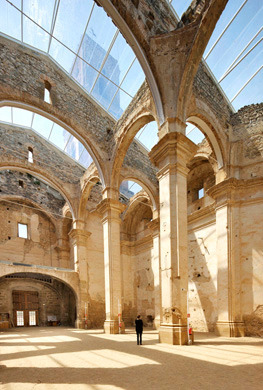
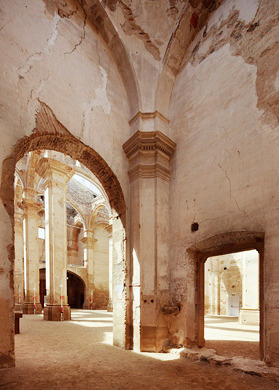


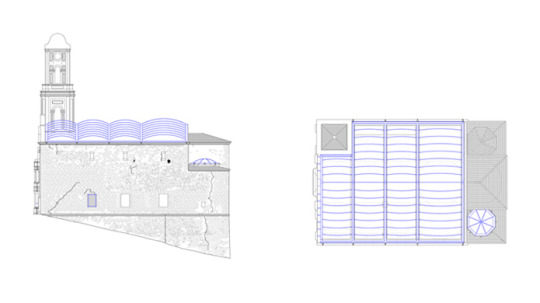
Situación:
Poble Vell, Corbera d’Ebre, Terra Alta, Tarragona
Arquitectos:
Ferran Vizoso, Núria Bordas, Jordi Garriga (2ª y 3ª fase), David Garcia (1ª fase)
Aparejadores:
Teresa Arnal (1ª y 2ª fase), Ernest Valls (3ª fase)
Promotores:
Ajuntament de Corbera d’Ebre, Incasol Generalitat de Catalunya (1ª y 2ª fase)
Colaboradores:
Mónica Company y Giovanni Bautista (concurso), Xosé Domínguez (proyecto y obra 3ª fase)
Empresas Constructoras:
Construcciones Jaén Vallés SL (1ª fase), Trac Rehabilitació d’Edificis SL (2ª fase), Becsa SA y Iaso SA (3ª fase)
Fotografías:
José Hevia
Concurso:
06.1999
2 notes
·
View notes
Text
A cross, a bell and a pot

The Vall de Núria is an area of the Catalan Pyrenean valleys that has been known since the early Middle Ages, despite being surrounded by mountains at an altitude of almost 3,000 metres. A Romanesque polychrome carving of the Virgin, dating from the 12th century, was found there.
Tradition attributes the making of the image to Saint Gil, an Athenian bishop from the not-too-distant diocese of Nîmes, while he was a hermit in the valley at the beginning of the 8th century. He summoned the shepherds of the region with a bell and provided them with food cooked in a pot, but the arrival of the Muslim invasion forced him to hide these utensils and a cross, now symbols of the invocation of Núria.
More than 300 years later, at the end of the 11th century, a Dalmatian named Amadeu built a chapel in the valley with the help of shepherds. In 1079, a bull hit a wall of the chapel and behind it all the elements that are currently venerated in the sanctuary were discovered: image, cross, bell and pot.
Almost a century later, Pope Alexander III issued a bull attesting to the existence of a pilgrims' hostel by the name of Annuria, which was destroyed in the 15th century by an earthquake. Reconstruction began years later, but was not completed until the mid-17th century.
At that time the hermitage of Saint Gil and a new baroque chapel were also built. In the 19th century, construction began on the sanctuary that has survived to the present day, whose façade is reminiscent of that of the cathedral of La Seu d'Urgell, the diocese on which it depends.
In the 20th century, the image became famous due to its "kidnapping" in order to prevent the Francoist authorities from taking part in the coronation of the Virgin, an act that was finally celebrated with a plaster copy in 1967. The figure was not returned until 1972.
The hotel that stands next to the sanctuary was the scene of the drafting of the first Statute of Autonomy of Catalonia in 1931, and behind the main buildings are some of the slopes of the ski resort of the same name.
2 notes
·
View notes
Text
2020 Olympics Spain Roster
Archery
Daniel Castro (Madrid)
Inés De Velasco (Madrid)
Swimming
Nicolás García (Madrid)
Alberto Martínez (Cartagena)
Hugo González (Palma De Mallorca)
J.L. Pons (Sóller)
Alisa Ozhogina (Moscow, Russia)
Iris Tió (Barcelona)
Ona Carbonell (Barcelona)
Berta Ferreras (Mataró)
Meritxell Mas (Granollers)
Paula Ramírez (Barcelona)
Sara Saldaña (Madrid)
Blanca Toledano (Madrid)
Mereira Belmonte (Badalona)
Marina García-Urzainqui (Barcelona)
Lidón Muñoz (Castellón De La Plana)
Jimena Pérez (Santander)
Paula Ruiz (Madrid)
Jessica Vall (Barcelona)
África Zamorano (Barcelona)
Athletics
Pablo Sánchez-Valladares (Madrid)
Odei Jainaga (Eibar)
Óscar Husillos (Palencia)
Adrián Ben (Viveiro)
Saúl Ordóñez (Ponferrada)
Ignacio Fontes (Granada)
Jesús Gómez (Burgos)
Adel Mechaal (Tétouan, Morocco)
Mohamed Katir (Mula)
Carlos Mayo (Madrid)
Asier Martínez (Zizur Mayor)
Orlando Ortega (Ontinyent)
Sergio Fernández (Barañain)
Daniel Arce (Burgos)
Fernando Carro (Madrid)
Sebastián Martos (Huelma)
Javier Guerra (Segovia)
Ayad Lamdassem-El Mouhcine (Lleida)
Daniel Mateo (Soria)
Diego García (Madrid)
Miguel López (Murcia)
Álvaro Martín (Llerena)
Luis Corchete (Torrevieja)
Jesús García (Madrid)
Marc Tur (Santa Eulària Des Riu)
Bernat Erta (Lleida)
Samuel García (Santa Cruz De La Palma)
Eusebio Cáceres (Onil)
Pablo Torrijos (Castellón De La Plana)
L.M. Martínez (Castellón De La Palma)
Javier Cienfuegos (Montijo-Badajoz)
Jorge Ureña (Onil)
María Pérez (Madrid)
Jaël-Sakura Bestué (Barcelona)
Natalia Romero (Villajoysa)
Teresa Errandonea-Fernández (Irun)
Carolina Robles (Madrid)
Sara Gallego (Madrid)
Aauri Bokesa (Madrid)
Esther Guerrero (Banyoles)
Marta Pérez (Barcelona)
Lucía Rodríguez (Madrid)
Marta Galimany (Valls)
Elena Loyo (Vitoria)
Laura Méndez-Esquer (Valencia)
Laura García-Caro (Lepe)
Raquel González (Mataró)
María Pérez (Orce)
Laura Bueno (Granada)
Fátima Diame (Valencia)
Ana Peleteiro (Ribeira)
María Toimil (Murgardos)
Laura Redondo (Barcelona)
María Vicente (L’Hospitalet De Llobregat)
Badminton
Pablo Abián (Calatayud)
Clara Azurmendi (Madrid)
Basketball
Pau Gasol (Sant Boi De Llobregat)
Rodolfo Fernández (Palma De Mallorca)
Sergio Rodríguez (San Cristóbal De La Laguna)
Ricky Rubio (El Masnou)
Víctor Claver (Valencia)
Marc Gasol (Sant Boi De Llobregat)
Guillermo Hernangómez (Madrid)
D.U. Garuba (Azuqueca De Henares)
Alberto Abalde (A Coruña)
Alejandro Abrines (Palma)
Sergio Llull (Mahón)
Juan Hernangómez (Madrid)
Cristina Ouviña (Zaragoza)
Silvia Domínguez (Madrid)
Alba Torrens (Binissalem)
Laia Palau (Barcelona)
Leonor Rodríguez (Las Palmas)
Maite Cazorla (Barcelona)
Tamara Abalde (Vigo)
Raquel Carrera (Ourense)
Queralt Casas (Bescanó)
María Conde (Madrid)
Laura Gil (Murcia)
Astou Ndour-Barro (Las Palmas)
Boxing
José Quiles (Murcia)
Gazimagomed Jalimov (Madrid)
Emmanuel Reyes (La Coruna)
Gabriel Escobar (Leganés)
Canoeing
Cayetano García (Madrid)
Pablo Martínez (Madrid)
Ander Elosegi (Irun)
David Llorente (Palazuelos De Eresma)
Carlos Arévalo (Betanzos)
Saúl Craviotto (Lleida)
Francisco Cubelos (Talavera De La Reina)
Íñigo Peña (Zumaia)
Rodrigo Germade (Cangas)
Marcus Walz (Mallorca)
Antía Jácome (Pontevedra)
Isabel Contreras (Madrid)
Núria Vilarrubla (La Seu d’Urgell)
Maialen Chourraut (Lasarte-Oria)
María Portela (Cangas)
Cycling
Jofre Cullell (Santa Coloma De Farners)
Omar Fraile (Santurtzi)
Jesús Herrada (Mota Del Cuervo)
Gorka Izagirre (Ormeiztegi)
Ion Izagirre (Ormeiztegi)
Alejandro Valverde (Las Lumbreras)
Albert Torres (Ciutadella De Menorca)
Sebastián Mora (Villarreal)
David Valero (Baza)
Margarita García (Marratxí)
Ane Santesteban (Errenteria)
Rocío Del Alba-García (Villa Del Prado)
Diving
Alberto Arévalo (Madrid)
Nicolás García-Boissier (Las Palmas)
Equestrian
Francisco Gaviño (Seville)
José Garcia-Mena (Madrid)
Severo Jurado (Madrid)
Eduardo Álvarez (Madrid)
Beatriz Ferrer-Salat (Barcelona)
Fencing
Carlos Llavador (Madrid)
Field Hockey
Alejandro Alonso (Valencia)
Marc Recasens (Madrid)
Llorenç Piera (Madrid)
José Basterra (Valencia)
Albert Béltran (Madrid)
Francisco Cortés (Terrassa)
Josep Romeu (Barcelona)
Ricardo Sánchez (Madrid)
Marc Sallés (Terrassa)
Miquel Delàs (Barcelona)
Enrique González (Madrid)
Álvaro Iglesias (Madrid)
David Alegre (Barcelona)
Roc Oliva (Barcelona)
Xavi Lleonart (Terrassa)
Viçens Ruiz (Terrassa)
Pau Quemada (Logroño)
Marc Boltó (Terrassa)
Laura Barrios (Madrid)
Candela Mejías (Madrid)
María Ruiz (Madrid)
Clara Ycart (Matadepera)
Carlota Petchamé (Barcelona)
María López-García (Madrid)
Berta Bonastre (Sabadell)
Belén Iglesias (Madrid)
Lola Riera (Valencia)
Julia Pons (Terrassa)
Begoña García (Zaragoza)
Beatriz Pérez (Madrid)
Georgina Oliva (Terrassa)
Alejandra Torres-Quevedo (Madrid)
Alicia Magaz (Madrid)
Lucía Jiménez (Madrid)
Soccer
Unai Simón (Vitoria)
Óscar Mingueza (Santa Perpètua De Mogoda)
Marc Cucerella (Alella)
Pau Torres (Villarreal)
Jesús Vallejo (Zaragoza)
Martín Zubimendi (San Sebastián)
Marco Asensio (Palma)
Mikel Merino (Pamplona)
Rafa Mir (Murcia)
Dan Ceballos (Utrera)
Mikel Oyarzabal (Eibar)
Eric García (Martorell)
Álvaro Fernández (Arnedo)
Carlos Soler (Valencia)
Jon Moncayola (Garínoain)
Pedro González (Tegueste)
Javi Puado (Barcelona)
Óscar Gil (Elche)
Dan Olmo (Terrassa)
Juan Miranda (Olivares)
Bryan Gil (Barcelona)
Iván Villar (Aldán)
Golf
Adri Arnaus (Barcelona)
Jon Rahm (Scottsdale, Arizona)
Carlota Ciganda (Pamplona)
Azahara Muñoz (Ciudad Málaga)
Gymnastics
Thierno Diallo (Madrid)
Nicolau Mir (Palma)
Joel Plata (Barcelona)
Néstor Abad (Madrid)
Miguel Zapata (Las Palmas)
Laura Bechdejú (Girona)
Marina González (Malgrat De Mar)
Alba Petisco (Villarina De Los Aires)
Roxi Popa (Madrid)
Handball
Gonzalo Pérez-De Vargas (Toledo)
Eduardo Gurbindo (Pamplona)
Jorge Maqueda (Toledo)
Ángel Fernández (El Astillero)
Valero Rivera (Barcelona)
Raúl Entrerríos (Gijón)
Alex Dujshebaev (Santander)
Daniel Sarmiento (Las Palmas)
Rodrigo Corrales (Cangas)
Julen Aguinagalde (Irun)
Ferran Solé (Sant Quirze)
Adrià Figueras (Barcelona)
Viran Morros (Barcelona)
Antonio García (La Llagosta)
Aleix Gómez (Sabadell)
Gedeón Guardiola (Petrer)
Marta López (Ciudad Málaga)
Carmen Martín (Almería)
Carmen Campos (Madrid)
Silvia Arderíus (Madrid)
Silvia Navarro (Valencia)
Mercedes Castellanos (Ciudad Real)
Jennifer Gutiérrez (Elche)
Nerea Pena (Pamplona)
Lara González (Sant Pola)
Soledad López (Ciudad Málaga)
Kaba Gassama (Granollers)
Alicia Fernández (Ferrol)
Almundena Rodríguez (Las Palmas)
Ainhoa Hernández (Barakaldo)
Lysa Tchaptchet (Yaoundé, Cameroon)
Mireya González (León)
Judo
Francisco Garrigós (Móstoles)
Alberto Gaitero (Tarragona)
Nikoloz Sherazadishvili (Madrid)
Cristina Cabaña (Ciudad Málaga)
Julia Figueroa (Ciudad Córdoba)
Ana Perez (Groesbeek, The Netherlands)
María Bernabéu (Alicante)
Karate
Damián Quintero (Torremolinos)
Sandra Sánchez (Talavera De La Reina)
Pentathlon
Aleix Heredia (Madrid)
Rowing
Jaime Canalejo (Seville)
Javier García (Seville)
Manel Balastegui (Banyoles)
Caetano Horta (Madrid)
Virginia Díaz (El Astillero)
Aina Cid (Amposta)
Sailing
Ángel Granda-Roque (Las Palmas)
Joel Rodríguez (Ipa)
Juan Cardona (Madrid)
Nicolás Rodríguez (Vigo)
Florián Trittel (Sant Andreu De Llaveneres)
Jordi Xammar (Barcelona)
Diego Botín (Santander)
Iago López (Santander)
Cristina Pujol (Porto d’Aro)
Paula Barceló (Palma)
Blanca Manchón (Seville)
Patricia Cantero (Vilamoura)
Silvia Mas (Vilamoura)
Támara Echegoyen (Ourense)
Tara Pacheco (Arucas)
Shooting
Alberto Fernández (Madrid)
Fátima Gálvez (Baena)
Skateboarding
Danny León (Madrid)
Jaime Mateu (Mallorca)
Julia Benedetti (La Coruña)
Andrea Benítez (Madrid)
Climbing
Alberto Ginés (Cáceres)
Table Tennis
Álvaro Robles (Huelva)
Galyna Dvorak (Barcelona)
María Xiao (Madeira, Portugal)
Taekwondo
Adrián Vicente (Madrid)
Javier Pérez (San Fernando De Henares)
Raúl Martínez (Elche)
Adriana Cerezo (Madrid)
Tennis
Pablo Andújar (Valencia)
Roberto Carballés (Ciudad Granada)
Pablo Carreño (Barcelona)
Alejandro Davidovich-Fokina (Fuengirola)
Paula Badosa (Begur)
Garbiñe Muguruza (Geneva, Switzerland)
Sara Sorribes (La Vall d’Uixó)
Carla Suárez (Barcelona)
Triathlon
Francisco Gómez (A Coruña)
Mario Mola (Palma)
Anna Godoy (Madrid)
Miriam Casillas (Badajoz)
Volleyball
Adrián Gavira (La Línea De La Concepción)
Pablo Herrera (Castelló De La Plana)
Elsa Baquerizo (Madrid)
Lili Fernández (Benidorm)
Water Polo
Álvaro Granados (Barcelona)
Miguel Del Toro (Seville)
Bernat Sanahuja (Terrassa)
Marc Larumbe (Barcelona)
Martin Faměra (Barcelona)
Alejandro Bustos (Madrid)
Unai Aguirre (Barcelona)
Daniel López (Barcelona)
Alberto Munárriz (Pamplona)
Francisco Fernández (Madrid)
Roger Tahull (Barcelona)
Felipe Perrone (Rio De Janeiro, Brazil)
Blai Mallarach (Olot)
Laura Ester (Barcelona)
Marta Bach (Mataró)
Anni Espar (Barcelona)
Beatriz Ortiz (Terrassa)
Roser Tarragó (Barcelona)
Elena Ruiz (Rubí)
Clara Espar (Barcelona)
María Peña (Madrid)
Judith Forca (Sabadell)
Irene González (Barcelona)
María García (Barcelona)
Paula Leitón (Terrassa)
María Sánchez (Terrassa)
Weightlifting
Marcos Ruiz (A Coruña)
David Sánchez (El Ejido)
Andrés Mata (Valencia, Venezuela)
Lidia Valentín (Ponferrada)
#Sports#National Teams#Spain#Russia#Races#Morocco#Basketball#Fights#Boxing#Boats#Animals#Hockey#Hockey Goalies#Soccer#Golf#Arizona#Cameroon#The Netherlands#Tennis#Portugal#Switzerland#Brazil#Venezuela
7 notes
·
View notes
